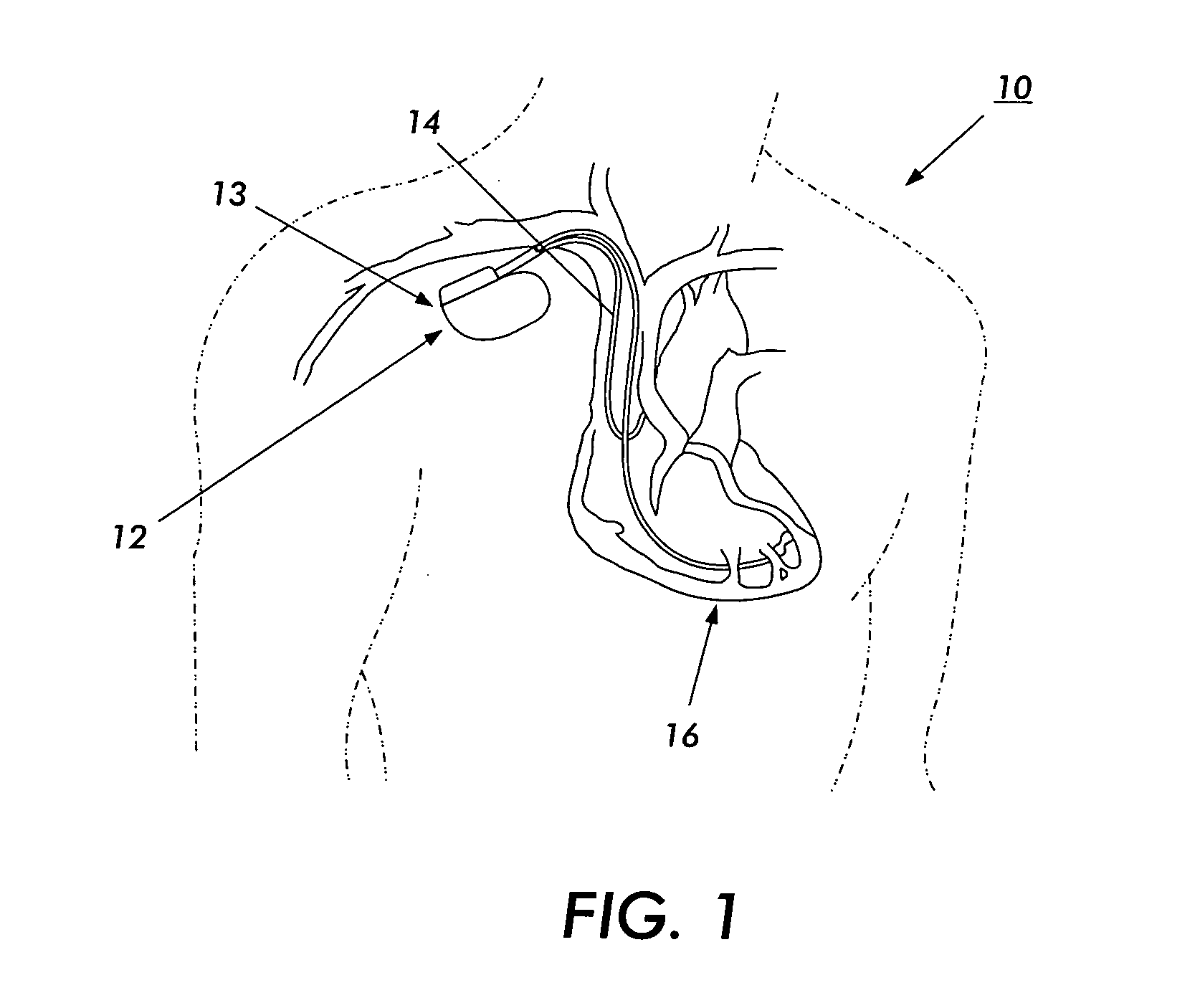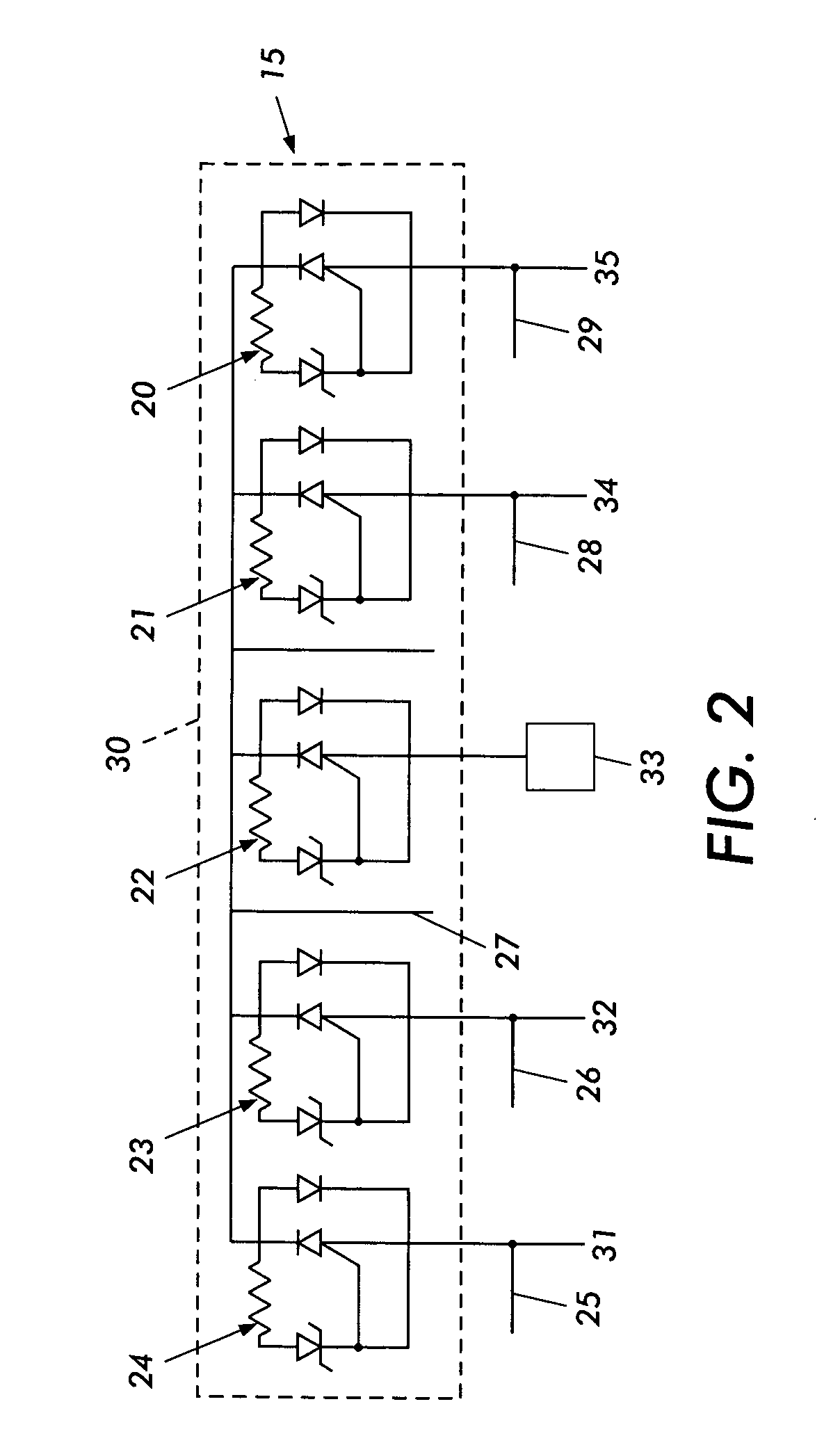Medical device with an electrically conductive anti-antenna geometrical shaped member
a geometrical shaped, electrically conductive technology, applied in the direction of coupling device connection, coupling device details, therapy, etc., can solve the problems of implanted devices being vulnerable to severe electromagnetic noise external sources, affecting the desired functionality of the pacemaker, and often presenting problems, so as to prevent and tissue implantable devices from failing
- Summary
- Abstract
- Description
- Claims
- Application Information
AI Technical Summary
Benefits of technology
Problems solved by technology
Method used
Image
Examples
third embodiment
[0357] In the present invention as illustrated in the figures, a cardiac assist system includes a primary device housing. The primary device housing has a control circuit, therein, to perform synchronous cardiac assist operations. The cardiac assist system further includes a secondary device housing that has a control circuit, therein, to perform asynchronous cardiac assist operations
[0358] A detection circuit, located in either the primary or secondary device housing and communicatively coupled to the control circuits, detects an electromagnetic interference insult upon the cardiac assist system. The detection circuit can also be located in a third device housing. Examples of such detection circuits are a thermistor heat detector; a high frequency interference detector; a high voltage detector; and / or an excess current detector.
[0359] The detection circuit is communicatively coupled to the control circuits through a fiber optic communication system and / or through electromagnetic i...
fourth embodiment
[0367] In the present invention, an implantable pacemaker or a cardiac assist system is used to regulate the heartbeat of a patient. The implantable cardiac assist system is constructed of a primary device housing that has control circuitry therein. This control circuitry may include a control unit such a microprocessor or other logic circuits and digital signal processing circuits. The primary device housing may also include an oscillator, memory, filtering circuitry, an interface, sensors, a power supply, and / or a light source.
[0368] The microprocessor may be an integrated circuit for controlling the operations of the cardiac assist system. The microprocessor integrated circuit can select a mode of operation for the cardiac assist system based on predetermined sensed parameters. In one embodiment, the microprocessor integrated circuit isolates physiological signals using an analog or digital noise filtering circuit.
[0369] The primary device housing also can contain circuitry to d...
fifth embodiment
[0378] In the present invention as illustrated in the figures, an implantable cable for transmission of a signal to and from a body tissue of a vertebrate is constructed of a fiber optic bundle having a cylindrical surface of non-immunogenic, physiologically compatible material. The fiber optic bundle is capable of being permanently implanted in a body cavity or subcutaneously. An optical fiber in the fiber optic bundle has a distal end for implantation at or adjacent to the body tissue and a proximal end. The proximal end is adapted to couple to and direct an optical signal source. The distal end is adapted to couple to an optical stimulator. The optical fiber delivers an optical signal intended to cause the optical stimulator located at a distal end to deliver an excitatory stimulus to a selected body tissue. The stimulus causes the selected body tissue to function as desired.
[0379] The optical stimulator is constructed, in a preferred embodiment, is constructed of a photoresponsi...
PUM
 Login to View More
Login to View More Abstract
Description
Claims
Application Information
 Login to View More
Login to View More - R&D
- Intellectual Property
- Life Sciences
- Materials
- Tech Scout
- Unparalleled Data Quality
- Higher Quality Content
- 60% Fewer Hallucinations
Browse by: Latest US Patents, China's latest patents, Technical Efficacy Thesaurus, Application Domain, Technology Topic, Popular Technical Reports.
© 2025 PatSnap. All rights reserved.Legal|Privacy policy|Modern Slavery Act Transparency Statement|Sitemap|About US| Contact US: help@patsnap.com



